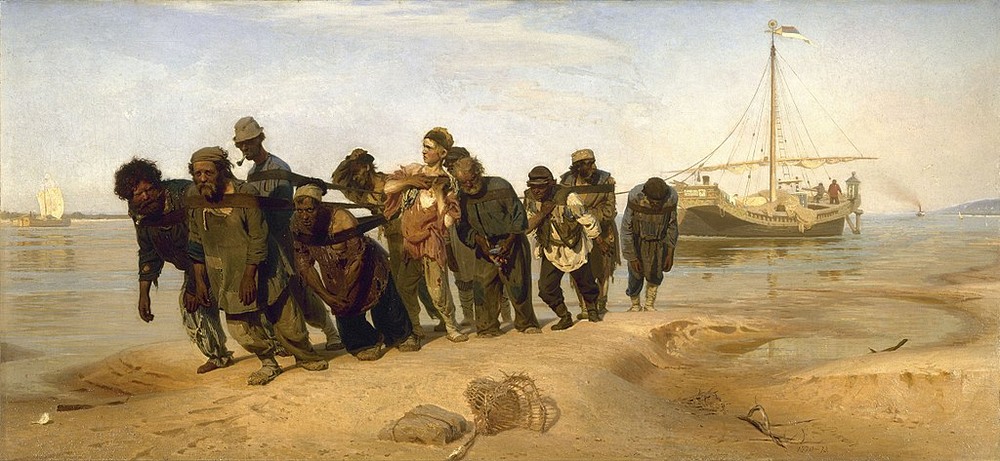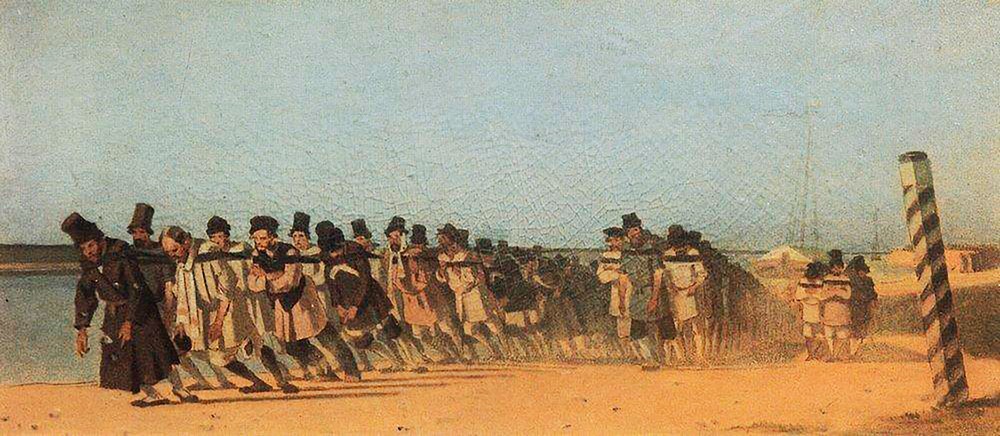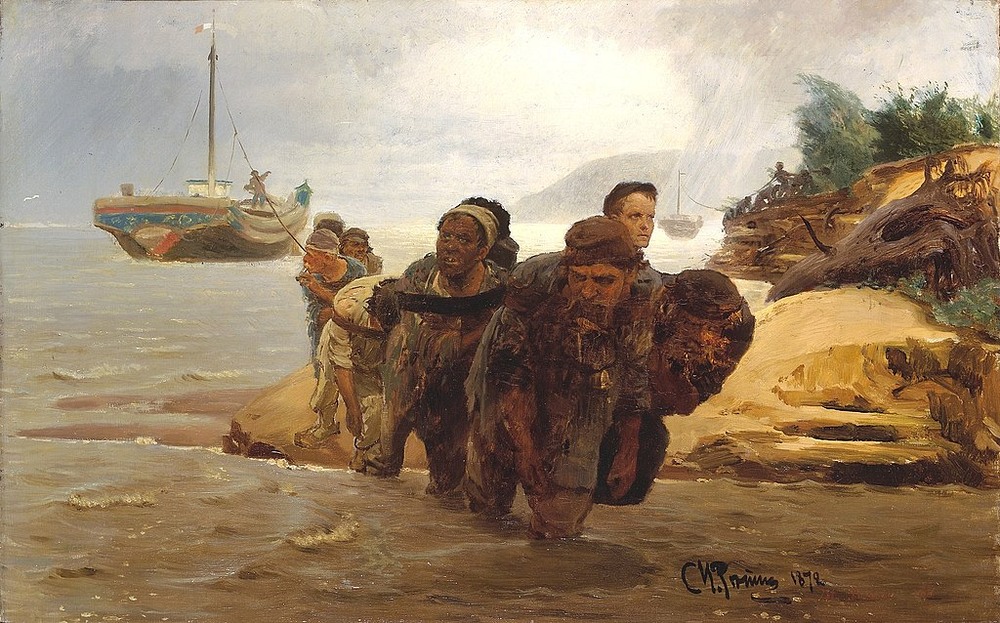Before the era of steam engines, the process of moving a boat or a barge up a river was extremely difficult. The usual method was to tow them using beasts of burden, such as horses or mules, along a towpath on the banks of a river or canal. Sometimes a team of human pullers did the job when animals were not available.
During the time of the Russian Empire, barges loaded with cargo were often towed up the Volga and its tributaries with the help of laborers known as burlaki. The work was grueling and seasonal, but tens of thousands of people living in villages along the Volga found employment in it.

“Barge Haulers on the Volga” by Ilya Repin, 1870.
Burlaki were hired in the beginning of the river navigation, usually in towns such as Nizhniy-Novgorod, Saratov, Rybinsk and Kiev. Rybinsk, an important river port located at the confluence of the Volga and Sheksna Rivers, became the unofficial “capital of the burlaki.”
Most of the barge haulers were serf, or agricultural laborer who were bound by the feudal system into working on his lord's estate. But many people voluntarily joined the trade, despite the back-breaking work (a burlaki worked up to 18 hours a day) and low wages because they were often desperately in need of money. Wages were usually not enough to cover the expenses of the whole trip, and the barge haulers were often forced to borrow from the following years’ wages. Many burlaki were hired during winter, a time when prices fell and the haulers needed advance payment. Burlaki were paid only at the end of the season, so most came home already in debt.

Burlaki women on Volga River.

Burlaki men on Volga River.
The need for barge haulers came to an end in the 19th century with the growth and development of steamships. By mid century, the number of burlaki fell by half a million, but there were still 150,000 of them working the waterways. By the beginning of the 20th century, burlaki had mostly disappeared.
One of the most famous depiction of the trade is Ilya Repin’s painting Barge Haulers on the Volga. Repin was holidaying in St Petersburg when he first caught sight of the men and women pulling barges up the Volga river. Repin was so stunned by the cruelty of the spectacle that he returned to the Volga many times to watch these unfortunate people work, to talk to them and make acquaintance. Eventually, he convinced some of them to pose for a painting. Barge Haulers on the Volga, became one of Repin’s most celebrated work and a powerful symbol of capitalistic exploitation.

“Burlaki” by Vasily Vereshchagin, 1866.

“Barge Haulers wading” by Ilya Repin, 1872.
No comments:
Post a Comment